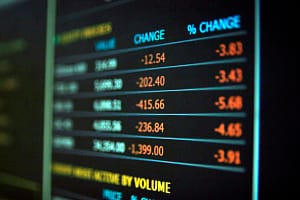New data from Tradeshift’s Q1 Index of Global Trade Health paints an encouraging picture for global trade, with robust growth observed in China and the US, alongside indications of a rebound in global demand for manufactured goods.
Total transaction volumes across the Tradeshift network, used by over a million businesses worldwide, improved by one point compared to the previous quarter, landing three points below the anticipated range in Q1. While this marks the ninth consecutive quarter of growth below expectations, it also signifies the third consecutive quarter of upward momentum after a prolonged period of sluggish activity.
“We’re seeing successive quarters of strong order volume growth for the first time in two years,” said James Stirk, CEO, Tradeshift. “Demand levels seem to be recovering, but there’s still a fair way to go before we start to see a normalisation. Recovery is likely to remain fragile over the short-to-medium term, with factors such as the Red Sea crisis and wider geopolitical uncertainty clouding the picture.”
Key regional and sector-based indicators from the report include:
- China turnaround: Trade activity in China rose at the most significant rate in Q1. Transaction volumes grew at two points above the expected level, the highest in more than two and a half years.
- US moves up a gear: The US also continued gaining momentum in Q1, with total trade activity tracking one point above the baseline. Order volumes surged to an impressive seven points above the expected level, following growth of a similar level in the previous quarter.
- Manufacturing recovery: Tradeshift sees growth coming in part from an uptick in demand across the manufacturing sector where trade activity tipped back into the expected range for the first time in a year.
- Eurozone edges higher: Activity levels across the Eurozone improved to three points below the baseline in Q1 having sunk as low as nine points below that level just six months earlier. New orders grew at six points above anticipated levels.
- UK orders disappoint: UK trade activity improved to four points below the expected level in Q1, but order volumes were sluggish, tracking five points below expectations.
While a sustained recovery in orders is suggestive of more favourable trading conditions, liquidity challenges persist for suppliers, posing a potential challenge as supply chains look to ramp up activity. Although invoice payment times have decreased since their peak in Q3 2022, suppliers still face a 6% longer wait compared to the pre-pandemic era.
“Cash flow is akin to fuel in supply chains and a lot of suppliers will be running on empty after two hard years,” added Stirk. “The longer suppliers have to wait to turn invoices into cash, the greater the likelihood that an influx of new orders starts to outpace the availability of working capital to fulfil demand.”






Leave a Comment